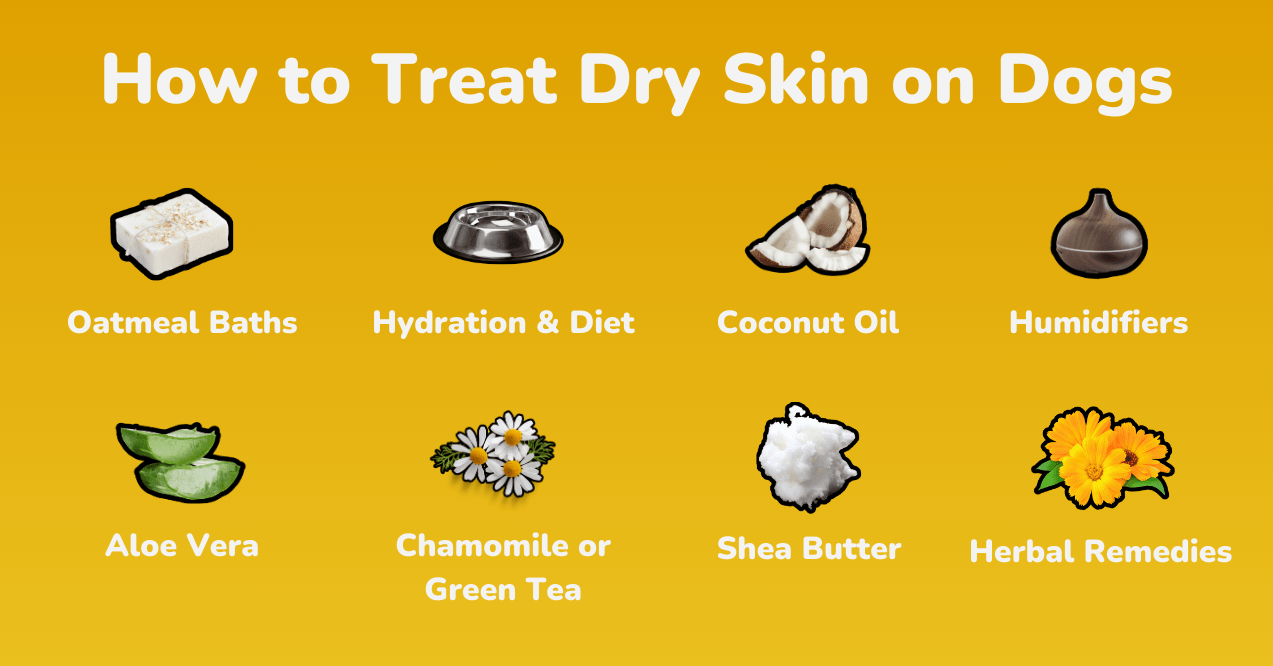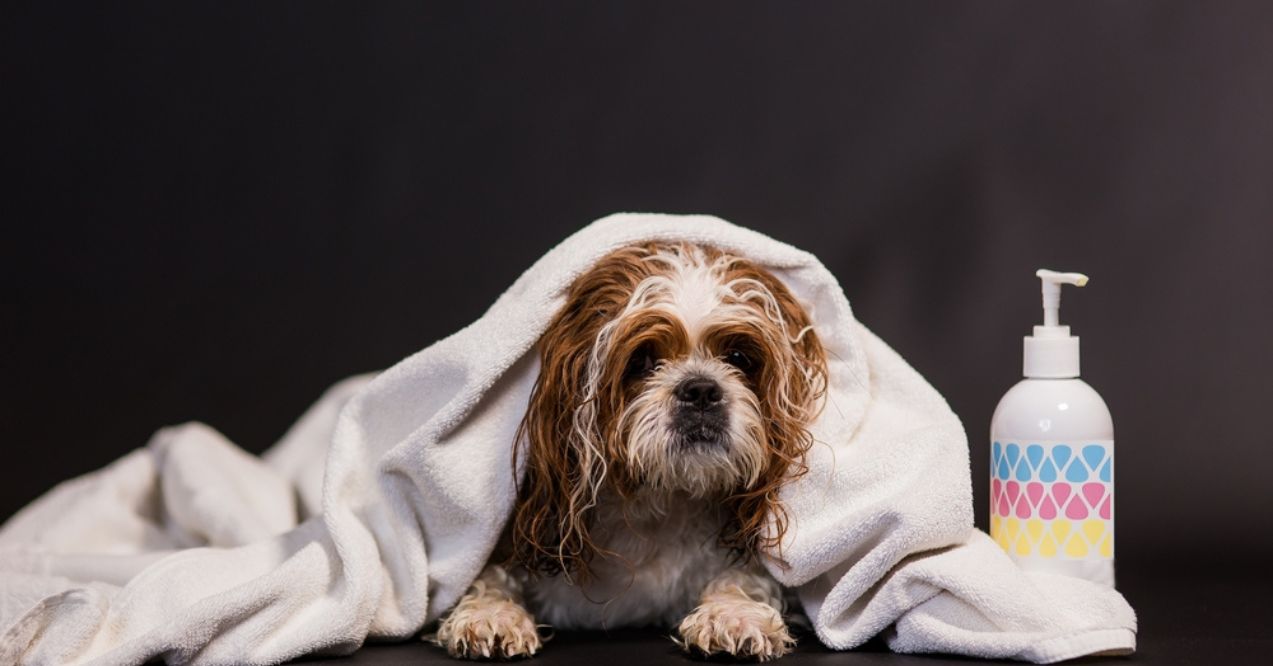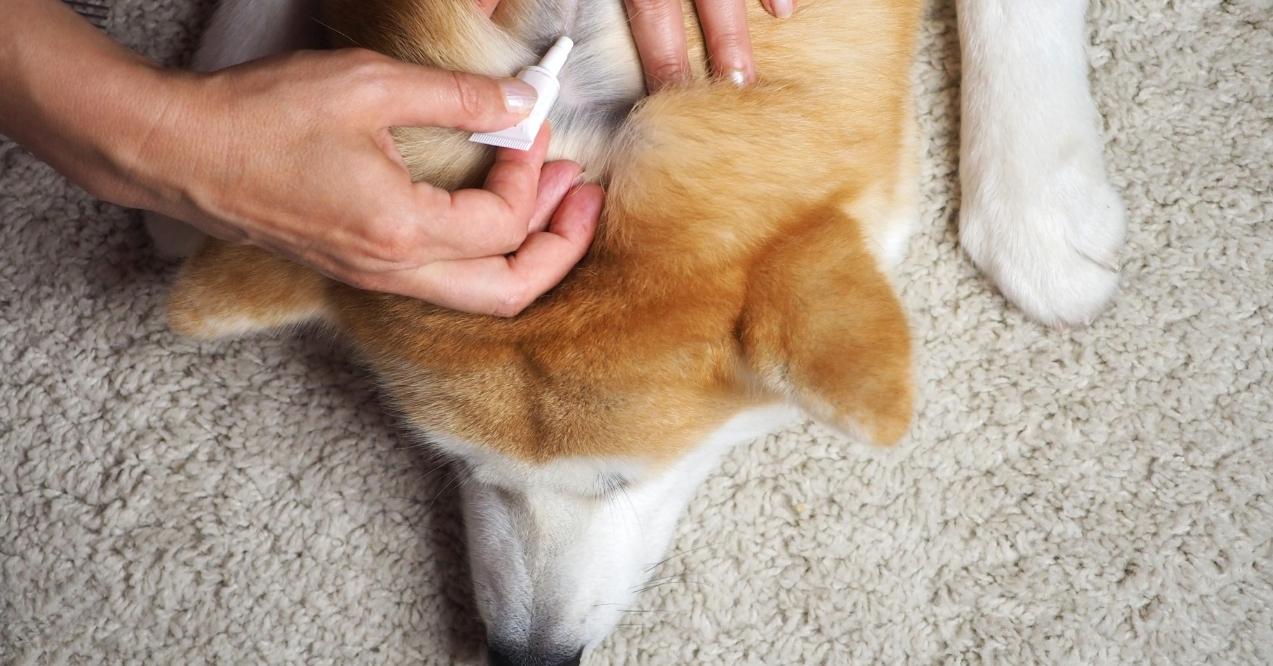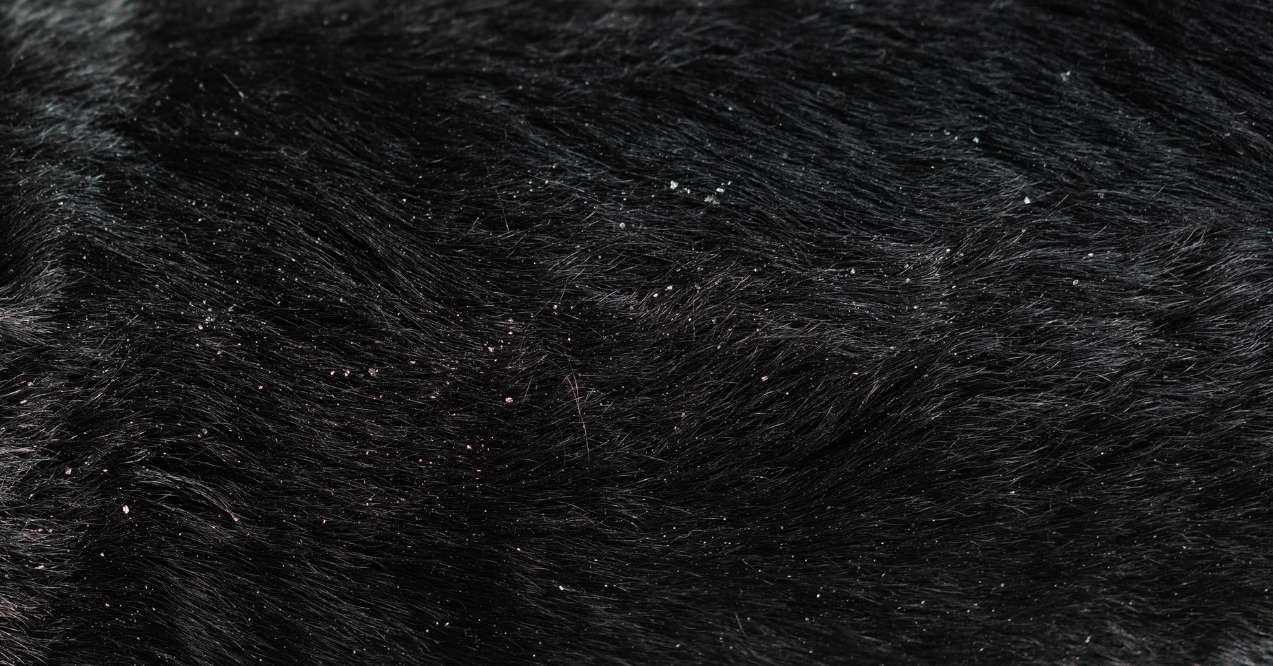How to Treat Dry Skin on Dogs?
Understanding how to treat dry skin on dogs is essential for any pet owner. Dry skin is a common issue that can affect dogs of all breeds and ages. Addressing dry skin is crucial for maintaining your dog’s overall health and comfort.
Various factors can contribute to dry skin in dogs, including environmental conditions, allergies, and nutritional deficiencies. Additionally, one significant factor is the lack of essential nutrients like Omega-3 fatty acids, which are vital for healthy skin and coat.
By exploring various natural approaches and preventive measures, pet owners can support their dogs’ skin health and overall well-being, ensuring a happier and more comfortable life for their furry friends.

How to Help Dogs With Dry Skin
Understanding how to treat dry skin on a dog involves various effective methods to ensure their comfort and health. This section delves into practical approaches that can alleviate dry skin and promote overall well-being. Here are some key methods:
Oatmeal Baths
An oatmeal bath is a simple and effective way to help manage dog’s dry skin. To give your dog an oatmeal bath:
- Grind plain, unsweetened oatmeal into a fine powder using a blender.
- Fill a bathtub with warm water and add the powdered oatmeal, stirring to mix thoroughly.
- Place your dog in the tub and gently pour the oatmeal water over their body.
- Massage the oatmeal mixture into their skin and coat, focusing on dry or itchy areas.
- Let your dog soak for 10-15 minutes.
- Rinse thoroughly with warm water and pat dry with a towel.
Hydration
Adequate water intake is also crucial for maintaining hydrated skin. Ensure your dog always has access to fresh water. Monitor their drinking habits and encourage more water intake, especially during hot weather or after physical activities. Hydration plays a vital role in managing dry skin for dogs.
Dietary Adjustments
A balanced diet rich in omega-3 and omega-6 fatty acids is essential for healthy skin. Choose high-quality dog food that includes these nutrients, as they help maintain skin moisture and promote a shiny coat. These fatty acids play a crucial role in reducing pro-inflammatory markers and supporting the immune system.
Additionally, using the best oils for dogs with dry skin can further support hydration and skin health, helping to keep your dog’s skin nourished and comfortable.
You may also consider supplements, such as fish oil or flaxseed oil, after consulting with a vet to ensure the appropriate dosage and type for your dog’s specific needs. Proper nutrition is a cornerstone of managing dry skin in dogs and supports overall health, contributing to a happier, more energetic, and healthier pet. Ensuring your dog gets a well-rounded diet with these essential nutrients can also reduce the risk of other skin conditions and improve their overall quality of life.
Coconut Oil
Coconut oil can also be an effective alternative for reducing dog dry skin due to its moisturizing properties. To apply coconut oil:
- Start with a small amount of organic, virgin coconut oil.
- Gently rub the oil between your hands to warm it.
- Massage the oil into your dog’s skin, focusing on dry or irritated areas.
- Allow the oil to sit for about 5-10 minutes before rinsing or leaving it on, depending on your preference.
Coconut oil provides several benefits, including moisturizing the skin, reducing pro-inflammatory markers, and promoting a shiny coat. Regular application can alleviate dryness and support your dog’s overall skin health.
Humidifiers
Using humidifiers in the home can effectively combat dry air, especially during winter months. Place a humidifier in areas where your dog spends most of their time. This helps maintain optimal humidity levels, preventing the skin from becoming too dry. By adding moisture to the air, humidifiers can be a crucial component in understanding how to help dogs with dry skin.
Aloe Vera
Aloe vera is a natural remedy that can relieve dry skin and promote healing. To use aloe vera on your dog’s skin:
- Choose a pure aloe vera gel, free from additives.
- Apply a small amount of the gel to dry or irritated areas.
- Gently massage it into the skin.
- Allow it to absorb without rinsing.
Aloe vera has soothing and anti-inflammatory properties that can alleviate itching and dryness. It also supports healing of irritated skin. Regular application can improve your dog’s skin condition, making it an effective component in managing dog dry skin
Chamomile or Green Tea Rinses
Chamomile and green tea rinses can be useful for soothing irritated skin and reducing inflammation. If you wonder how to help manage my dogs dry skin with chamomile or green tea, here is a step by step guide:
- Brew a strong pot of chamomile or green tea and let it cool to room temperature.
- Pour the cooled tea into a bowl.
- Using a clean cloth, gently apply the tea to your dog’s dry skin areas.
- Alternatively, you can pour the tea over your dog’s coat after a bath, ensuring it reaches the skin.
- Allow the tea to dry naturally on your dog’s skin.
These rinses provide anti-inflammatory properties, helping to alleviate itching and promote skin health.
Shea Butter
Shea butter is a natural moisturizer that can be also highly effective for managing dry skin in dogs. Here’s how to use it:
- Ensure you have 100% pure shea butter, free from additives.
- Gently warm a small amount between your hands until it softens.
- Massage the shea butter into your dog’s dry skin areas.
- Allow it to absorb naturally; shea butter is safe if your dog licks it.
Shea butter provides deep moisturizing benefits, helping to restore the skin’s natural barrier and alleviate dryness.
Herbal Remedies
Safe herbal options like calendula and witch hazel can be beneficial in managing dry skin. To use these herbs:
- Calendula – Use calendula cream or ointment by applying a small amount to the dry skin areas. Its healing properties help soothe and support skin repair.
- Witch Hazel – Apply witch hazel using a cotton ball to gently dab onto the affected areas. It acts as a natural astringent, reducing pro-inflammatory activity and itching.
Both calendula and witch hazel offer natural solutions to support healthier and more comfortable skin for your pet.
Preventive Measures

Preventing dry skin in dogs is just as important as learning how to manage dry skin on dogs. By taking proactive steps, you can help maintain your dog’s skin health and overall well-being. Here are some key preventive measures to consider:
Regular Grooming Practices
Maintaining a regular grooming schedule is crucial for keeping your dog’s skin and coat healthy. Here are some tips:
- Brushing – Regular brushing helps remove dead skin cells and distributes natural oils throughout the coat, promoting healthy skin.
- Bathing – Bathe your dog as needed, but not too frequently, to avoid stripping their skin of natural oils. Use moisturizing shampoos and conditioners specifically designed for dogs with dry skin.
- Ear Cleaning – Regularly check and clean your dog’s ears to prevent infections that can cause skin issues.
By following these practices, you can help keep your dog’s skin hydrated and healthy.
Protecting Against Parasites
Regular flea and tick prevention is essential in avoiding skin problems caused by these parasites. Here’s how to protect your dog:
- Preventative Treatments – Use flea and tick preventatives regularly, as recommended for your dog’s size and breed.
- Inspection – Frequently check your dog’s skin and coat for signs of fleas, ticks, or other parasites, especially after walks or outdoor play.
- Clean Environment – Keep your dog’s living area clean and free of pests by washing their bedding and vacuuming regularly.
Preventing parasites not only reduces the risk of dry skin but also protects your dog from various health issues.
Monitoring and Adjusting Diet
Regular vet check-ups are essential for monitoring and adjusting your dog’s diet based on their specific needs.
- Nutritional Balance – Ensure your dog’s diet is balanced and rich in essential nutrients like omega-3 and omega-6 fatty acids, which promote healthy skin and coat.
- Weight Management – Maintain your dog’s healthy weight to prevent skin folds and other issues that can contribute to dry skin.
- Allergy Identification – Work with your vet to identify and manage any food allergies that may cause skin problems.
Implementing these preventive measures can go a long way in maintaining your dog’s skin health, ensuring they remain comfortable and happy.
Conclusion
How to treat dry skin on dogs involves a combination of natural remedies, dietary adjustments, and preventive measures. Oatmeal baths, coconut oil, and proper hydration can help soothe dry skin, while a diet rich in essential fatty acids supports overall skin health. Regular grooming and parasite prevention are also important to prevent skin issues. By addressing the underlying causes and taking proactive steps, you can keep your dog’s skin healthy and comfortable, ensuring they live a happier, itch-free life.
Yes, it is safe to use organic, virgin coconut oil on your dog’s skin. It can help moisturize, reduce inflammation, and improve coat health. Always apply in moderation and observe for any adverse reactions.
Brushing a dog helps with dry skin by distributing natural oils, removing dead skin cells, and stimulating blood circulation. Regular brushing promotes a healthier coat and skin, reducing dryness and improving overall skin condition.
You should bathe a dog with dry skin, but use moisturizing shampoos and consider oatmeal baths to soothe and hydrate the skin. Avoid over-bathing, as it can strip natural oils and worsen dryness.
Consult a vet if your dog’s dry skin is persistent, severe, or accompanied by other symptoms like hair loss, open sores, excessive itching, or behavioral changes. Professional advice is crucial for diagnosing and addressing potential underlying issues.
Advertisement. This site offers health, wellness, fitness and nutritional information and is designed for educational purposes only. You should not rely on this information as a substitute for, nor does it replace, professional medical advice, diagnosis, or treatment. If you have any concerns or questions about your health, you should always consult with a physician or other health-care professional. Do not disregard, avoid or delay obtaining medical or health related advice from your health-care professional because of something you may have read on this site. The use of any information provided on this site is solely at your own risk.


















